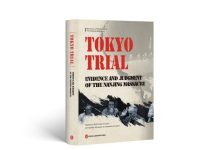By Richard Javad
Heydarian
One of the best ways to capture the prevailing geopolitical zeitgeist is by pinning down the latest cliché among strategic thinkers. Over the past five years, the term “Thucydides’ trap” has come to dominate the discourse about the most consequential bilateral relationship in the 21st century, namely between the United States and China.
The term has been popularized by Harvard political scientist Graham Allison, mainly thanks to his oft-cited Destined for War: Can America and China Escape Thucydides’s Trap? (2017).
In his book, Allison essentially argues that the Washington and Beijing are a modern Sparta and Athens, caught in the same hegemonic rivalry that the two ancient Greek city states found themselves in during the destructive Peloponnesian War.
Painting a potentially explosive situation: The two powers are trapped in a potentially explosive situation, Allison argues, whereby “a rising power is threatening to displace a ruling power” and “standard crises that would otherwise be contained “could quickly trigger” a cascade of reactions that, in turn, produce outcomes none of the parties would otherwise have chosen”. In short, even seemingly trivial disputes could spiral into full-scale confrontation between the US and China.
The rhetorical fireworks and strategic deadlock at the high-level strategic dialogue in Anchorage, Alaska, last month somehow confirmed the intensity of bilateral tensions between the US and China. In spite of being led by veteran diplomats, the two sides struggled to even agree on a joint statement, as they sparred over a whole host of hot-button issues with no signs of compromise on the immediate horizon.
Upon close scrutiny, however, it’s crystal clear that there are more than enough reasons to avoid a new Cold War in the 21st century. Around the world, there is a profound recognition of not only the necessity of preventing a destructive global conflict, but also forging a new Sino-US “grand bargain”, which will facilitate global recovery amid a raging pandemic and a festering climate change.
Coalition of the unwilling: The Cold War was a product of radically different circumstances. It was born out of World War II, which left the US and the Soviet Union victors of a global conflict that devastated much of Western Europe and East Asia. By the end of World War II, a largely unscathed US dominated close to half of global economic output. The Soviet Union, which suffered as many as 27 million casualties by some estimates, occupied much of Central and Eastern Europe, including parts of Berlin.
Thus, an economically dominant Washington and militarily formidable Moscow were in an unprecedented situation to divide a war-torn world into their own respective spheres of influence. And to be clear, the Cold War, given the absence of direct conflict between the two nuclear-armed superpowers, was hot and devastating in much of the post-colonial world, where proxy conflicts claimed as many as 20 million lives.
In the 21st century, however, the US is no longer as economically dominant as in the immediate postwar years, nor is China militarily occupying its immediate neighbors. Therefore, neither of the two powers is in a position to dictate the creation of rival military blocs as in the US-led North Atlantic Treaty Organization and the Moscow-led Warsaw Pact.
US cannot force others to break ties with China: Moreover, Western European countries, as well as post-colonial Asian nations are more prosperous and militarily capable than ever. And the traumatic memories of the Cold War has instilled a profound sense of independence among many nations, especially in Asia, which bore the brunt of both the Korean and Vietnam wars. Crucially, modern China is no Soviet Union, which was an overtly expansionist power with minimal economic footprint beyond its disparate alliances. In contrast, China is the top trading partner of almost all Asian and European countries, and is set to overhaul the global infrastructure landscape through the Belt and Road Initiative.
No wonder practically all Southeast Asian countries, including US treaty allies such as Thailand and the Philippines, are eager to maintain robust ties with China. More important, these countries are also actively resisting any pressure to choose between the two powers.
Across Southeast Asia, as in Eastern Europe, the Middle East, Africa and Latin America, the priority of countless emerging market economies and developing countries is to maintain optimal relations with all major powers. Thus, the US will struggle to enlist much of the world in a prospective new Cold War with China.
It’s quite telling that even major Western European countries such as Italy and key Indo-Pacific partners such as New Zealand have defied the US by participating in the China-proposed Belt and Road Initiative. In short, the US will struggle to form a full-fledged anti-China alliance, as it did during the Cold War against the economically weaker Soviet Union. On the other hand, China’s chances of building a counter-US alliance are also not very promising.
It’s true that China and Russia were quick to display a common front against Western sanctions on the ashes of the Anchorage dialogue. But despite the deepening bilateral strategic and economic ties in recent years, one cannot discount the element of Sino-Russian competition across former Soviet republics as well as in the global arms market. Not to mention Russia is also dependent on expanding energy exports to NATO member states, especially Germany.
Which means Moscow has an incentive to maintain at least functioning relations with major Western countries, especially in Europe.
–The Daily Mail-China Daily News Exchange Item



